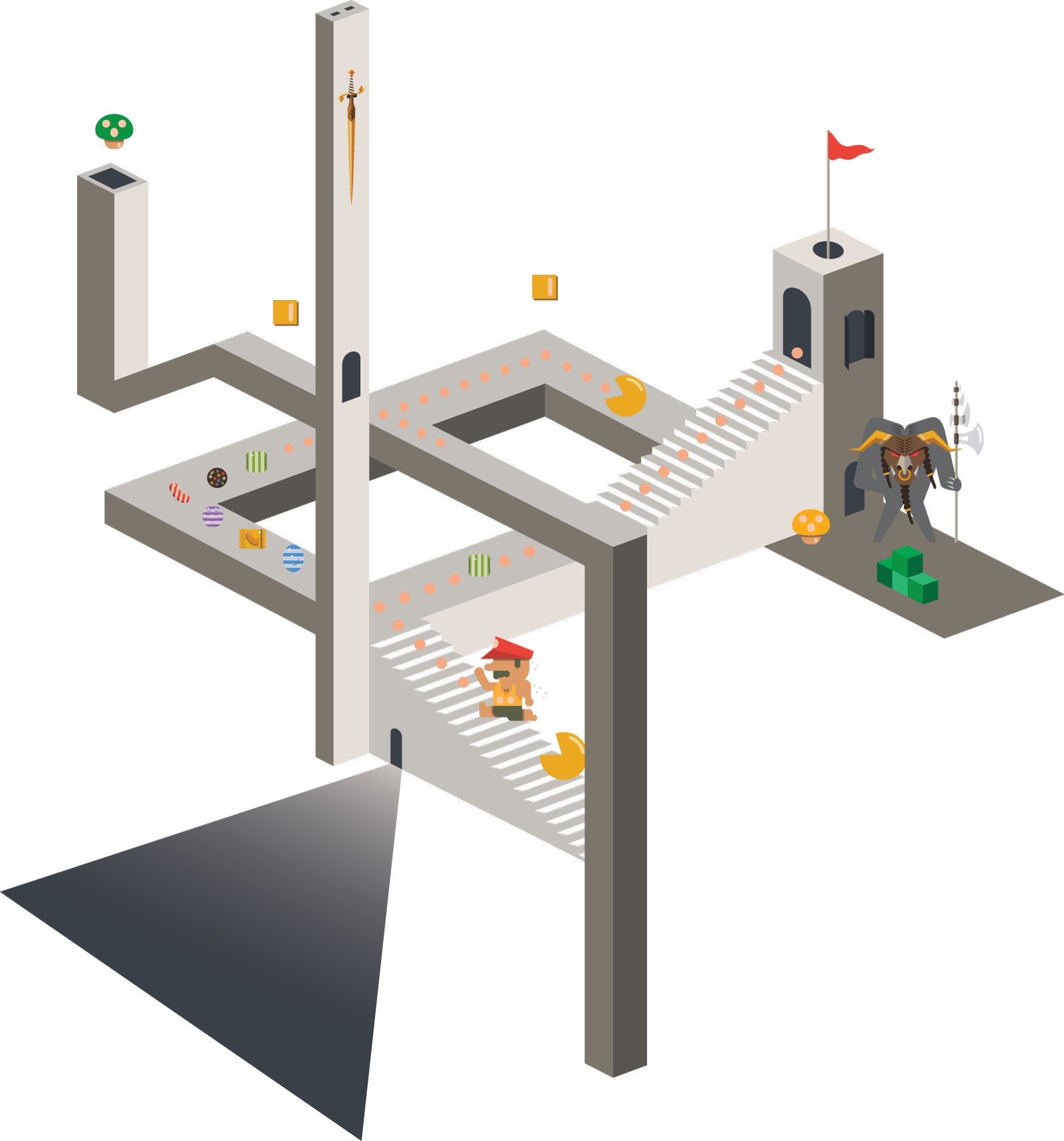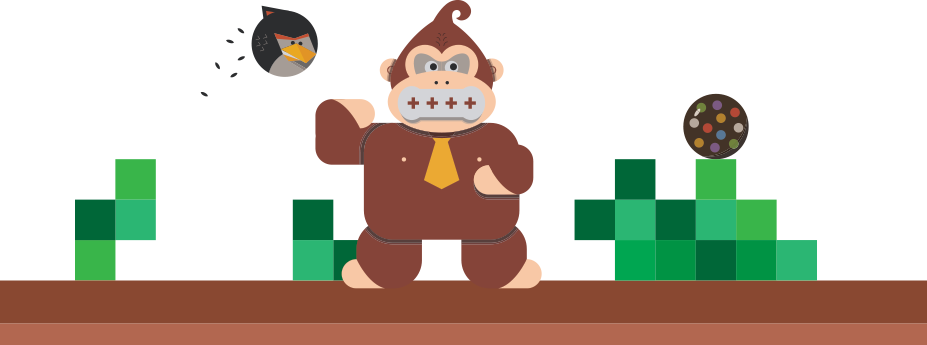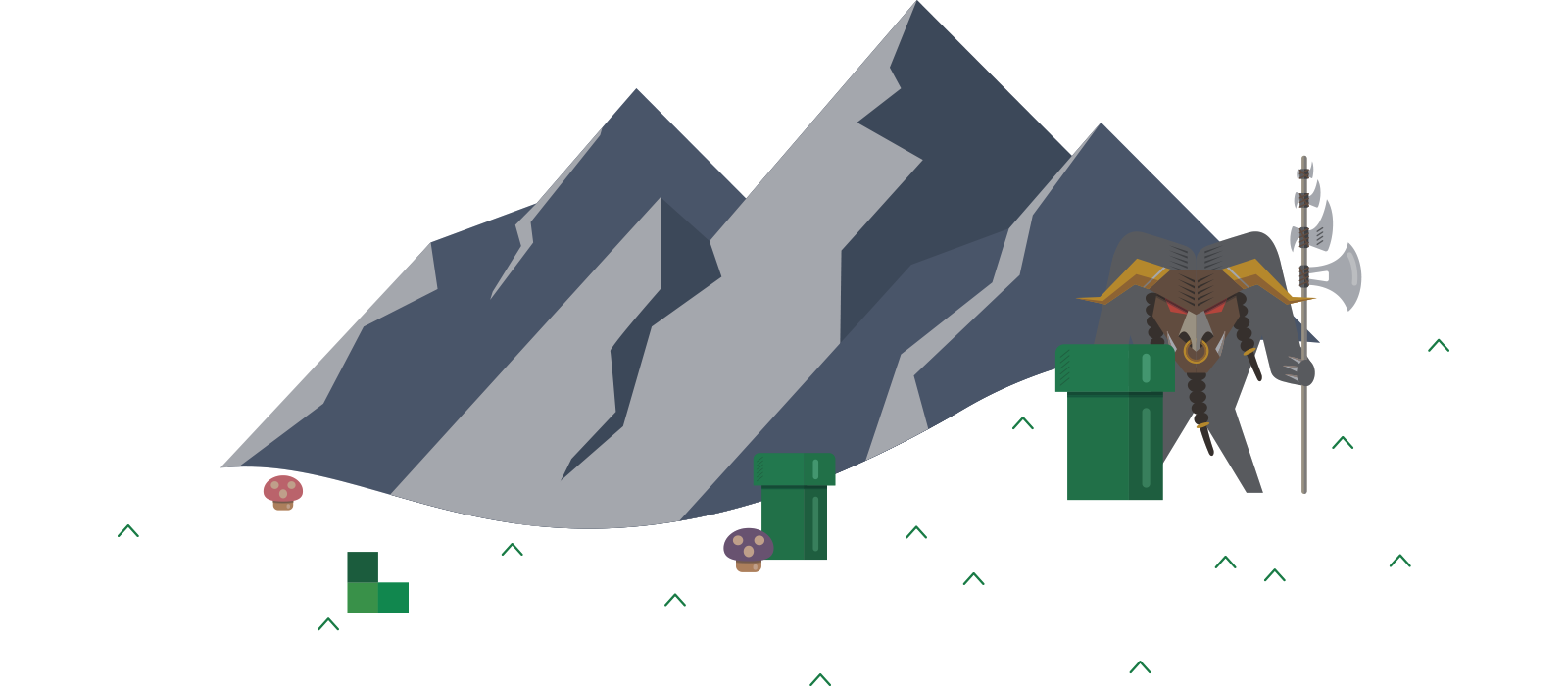Gamification evens the playing field in classrooms
Learning never follows a straight line. Requiring roaming through several twists and turns, learning starts simply but gets more complicated. You usually wander a bit, picking up skills, before reaching the master level.
That “I got it!” moment is just like reaching level 256 in Pac-Man, rescuing the Princess in Donkey Kong, or actually finishing World of Warcraft. Games are fun, and now, also a teaching instrument. Mount Royal professors are using game theory in the classroom to help students tackle some of the most abstract theories and challenging tasks.
“Gamification”, as defined by Educause (a non-profit organization that promotes the use of information technology in the advance of education) is applying game design, game theory and game principles to non-gaming educational situations.
Although it’s a relatively new term, the concept of Gamification has been around for a while. According to Zac Fitz-Walter, a Human Computer Interaction (HCI) specialist from the University of Queensland, the word Gamification was first used in 2003 by Nick Pelling, a programmer and inventor, well known for developing a series of 1980s computer games including Hedgehog and Invaders. Rewards cards — think of the ones you receive from your favourite stores — are a form of Gamification. Remember getting a gold star for good work in school? And how about Boy Scout and Girl Scout badges? They are a form of Gamification prizes that have been around since 1907.

Gamification is a way to motivate. In a gamified classroom, point systems are used, and students work their way up to what will ultimately be their grade in the course. A perfect score is 1,000, making 500 a pass and 850 (or 85 per cent) an A. Professors even provide the chance to go over 1,000 points, which often gets taken advantage of by the most enthusiastic learners.
In most other classes, you start with an A … and then valiantly try to keep it. With Gamification, there are a number of end results. Much like a Choose Your Own Adventure novel, at the end of each chapter (or class), you get to decide where you go next, and you can finish as quickly or as slowly as you want.
“
One of the reasons computer games are so successful is that really, innately, we enjoy learning things. Learning is really just what we do.
”
— Rod Corbett, instructor in the Bissett School of Business and Faculty of Continuing Education
Katrin Becker, PhD, faculty member in the Department of Mathematics and Computing, teaches a gamified Introduction to Computing class. Students can repeat assignments (Achievement Quests) within a set amount of time until they get the “score” they’re comfortable with. They can get to a passing grade and stop attending, and if they’re happy with their point level before the final exam, they can feel free to skip it.
It might sound like a free-for-all; however, it’s a rather carefully controlled environment, just as Minecraft demonstrates the value of combining imagination and co-operation without players regularly thinking about it; and Angry Birds teaches problem solving and physics.
“I make sure they touch on enough of the objectives to meet my goal for the course,” says Becker, who has been working with Gamification for more than 15 years.
“If you think about it in terms of being a game designer, it’s my job to lay out all possible paths so that you get to the end. But you still have choices.”
Carolyn Sterenberg, Marketing and Entrepreneurship faculty member in the Bissett School of Business, uses Gamification in the crafting of her entrepreneurship course.
“There’s a whole bunch of things we want (students) to do, and Gamification really helps because it rewards them for changing their behavior,” says Sterenberg. In her course, students embark on “knowledge quests,” examples of which are reading, watching, listening, doing or chatting — each for 10 points. They can do two of each for 100 points total.
“Unlike a world where we had to go look for things, students today are being inundated 24-7 with information. They have really strong filters up. So we have to find a way to break through those, to get them curious and trying new things and doing things differently so that they have a different experience, and then come up with a new idea,” she says.

Levelling up … or powering down
Rod Corbett, instructor in the Bissett School of Business and Faculty of Continuing Education, and also a retired Faculty Development Consultant for Mount Royal’s Academic Development Centre (ADC), teaches Business Management and Human Resources courses using Gamification techniques.
In his Creativity in the Workplace class, students may receive 10 points for identifying a need that innovation could help fill; then perhaps 10 more points for generating 50 ideas for how to fill the need; then extra points for coming up with more than 50. Points can also be earned for ranking the ideas and coming up with the criteria to do so.
And if the innovation fails? There are still points for understanding the process.
In regularly structured courses, Corbett says students are reluctant to take risks with their grade at stake.
“Gamification gives them the opportunity to take much more control over a grade and what they achieve, and also gives them an opportunity to fail, yet recover from that failure,” says Corbett.
“If something completely collapses on them, they have other ways to make up for it. It’s not unlike a computer gaming system, when you can go along a path and pick up bonus points along the way.
“It’s an authentic, active and current way to learn by doing, and about setbacks and overcoming barriers.”
The principle of high-frequency, low-stakes assessments also helps take the pressure and the stress off of students.
“I was able to accumulate quite a lot of points on initial assignments to give me a comfort zone and reassurance that I would be able to get a good grade in the class,” says Graeme MacLean, a fourth-year business general management degree student who took Sterenberg’s entrepreneurship class.
“It gives you incentive to do more at the beginning of a course, rather than letting it all pile up,” he says. “When we’re young, we’re great learners,” Becker says. “A teacher will ask a question, everyone wants to answer, and they will stand up and say the wackiest things.
“But somewhere along the line, we teach students that it’s bad to be wrong. That it’s embarrassing to make a mistake.”
And sometimes students have no idea if they’re making mistakes or not. Often grades take ages (or it feels like it) to come back, and by then you’ve moved on, says Christine MacDonald, a fourth-year Human Resources student who has taken both of Corbett’s courses.
“If you get feedback a week or more later, you’re past it. You’re not thinking about it. It’s like, whatever. It is what it is,” she says.
With Gamification, feedback comes quickly, a necessity for how the classes are structured. Quintessentially experiential, as you progress you learn new skills on different levels, and then start applying those skills.
“Everything becomes a tool in Rod’s courses,” says MacDonald.
The rewards
What makes a game fun is getting good at it,” Becker says. “If you screw up in a game and you die, you try again.”
And there are rarely many regrets. You can design a bad course just as you can design a bad game, Becker says. She describes three main parts to successfully gamifying a course. The first is having a tangible connection with other people and other things. The second is autonomy — control over yourself and what you do. The final element is competence.
“One of the reasons computer games are so successful is that really, innately, we enjoy learning things,” says Corbett. “Learning is really just what we do.”
Does it seem as if “nobody” plays some of the best games ever made anymore?
Even though the once revolutionary SimCity forced the dredging up of dormant engineering and latent community-building talents, it has faded into relative obscurity. But Tetris, in a new improved form, seems to have made a major comeback (thanks to the iPad and iPhone versions).
It may be that Gamification will do the same thing, go in and out of vogue while evolving with the times. Classes like those at Mount Royal will just provide a different way to earn a grade. It’s certainly true that not everything can be gamified, such as finding the cure for cancer or solving global warming. But where it really matters, and what it does really well, is tap into that intrinsic drive for knowledge and allow for motivation to thrive.
The points are secondary, no matter what world you may be in, and the results stay with you forever.

Read more Summit
Keeping teachers at the head of the class
Mount Royal’s collaborative model for its Bachelor of Education — Elementary is being copied around the country.
READ MORE




